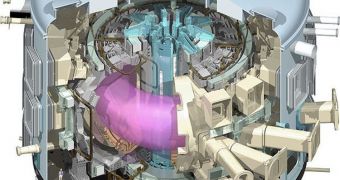In 2006, when the first cost estimates for the planned ITER experimental fusion reactor were presented to the international partners, countries decided that the investment was worth pursuing. Over the past four years, however, things changed considerably, and the tokamak now comes with an estimated €15-billion ($19-billion) price tag attached. At a recent meeting of those in charge with building the machine, representatives of countries in the European Union failed to agree on how to come up with the billions needed to find their 45-percent cut of the initiative.
The current economic crisis has left many countries in the EU strapped for cash, and some of them can no longer fulfill their obligations to international projects such as the ITER. The current cost estimate is three times as large as it was in 2006, analysts say, and this may be one of the factors contributing to the current predicaments. The existing disagreements can have two possible outcomes – either EU states decided to delay the construction of ITER even further (beyond the planned 2019 opening date), or scrap the project entirely, after having invested millions in it.
“I think the momentum of the project may be in very deep trouble. Time is pressing,” an anonymous ITER scientist explains. The expert adds that people are not yet ready to renounce ITER so easily, as this particular tokamak has been the dream of fusion physicists for more than 25 years. The promise of clean renewable energy is very appealing to many, and nuclear fusion is generally believed to be the way of the future. In this process, atoms are not broken apart (as in nuclear fission), but rather merged together, or fused. Hydrogen isotopes therefore go on to form the chemical helium, while releasing vast amounts of energy, which can then be harnessed and used.
If these endeavors are successful, then the world could see a major transformation, as far as energy production goes. Having a reliable and perfectly safe source of power will virtually eliminate the need for fossil-fuel power plants, and even wind and solar farms will become obsolete. In order for this to happen, governments worldwide will have to make a huge financial effort at first, and put large sums of money in research and development. They will have to then invest even further in installing the resulting fusion-based power plants across their territories, Nature News reports.

 14 DAY TRIAL //
14 DAY TRIAL //